Definitions to know:
Body awareness: Being conscious and connected to one’s body as in its movements, sensations and position in space. This combines interoception, vestibular and proprioception input.
Proprioception: Understanding where one’s body is in space.

Interoception: Awareness of internal bodily sensations.
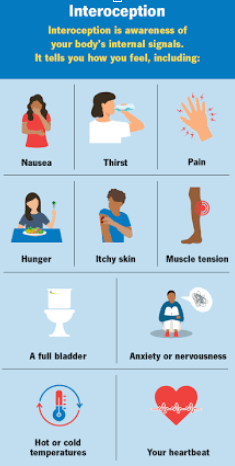
Vestibular: Balance and spatial orientation which helps the body orient through space.
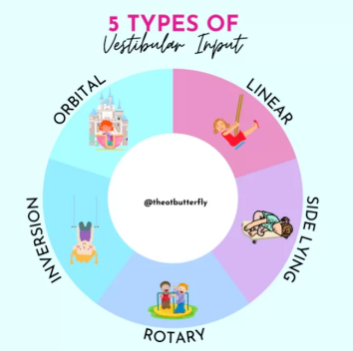
Sensory Seeker: A person that actively seeks out some type of sensory to fulfil a sensory need to regulate themselves.
Sensory sensitivity: Heightened awareness of certain senses and feeling them more strongly than others which can be dysregulating.
Tactile defensiveness: Sensory processing sensitivity where the person experiences touch stronger than others which can lead to aversion.
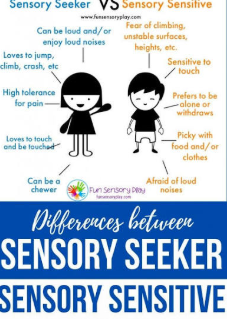
Postural stability: Being able to keep one’s body balanced and controlled when standing or moving to maintain an upright position. Sensory input is required to keep proper position such as visual, auditory, and proprioception input. Postural stability requires strong core muscles and coordination which are also crucial for child development, starting the baseline for gross and fine motor abilities. 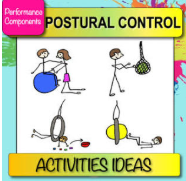
Muscle tone: Resting tension in skeletal muscles and cannot be controlled voluntarily. This is the body’s response to force and helps with reflexes, organ regulation and posture.
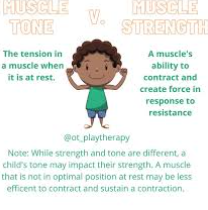
Motor planning: ability to plan and organize one’s body movements
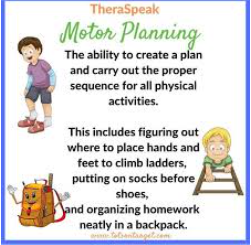
Heavy work: Activities that provide deep pressure and proprioceptive feedback to the child. These activities often include carrying, pushing, or pulling.
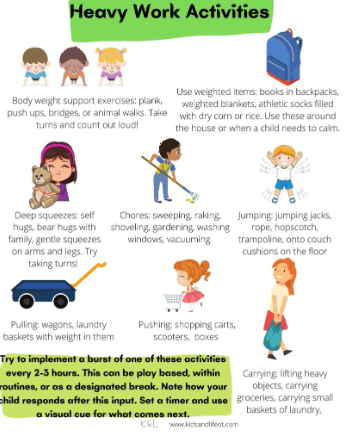
What are Joint Compressions?
Joint compressions are when you push joints together, compressing them, multiple times for a few seconds to provide proprioceptive input. This then promotes body awareness, regulation, postural stability, muscle tone, and motor planning. Joint compressions can also come from heavy work, however it is not as targeted.
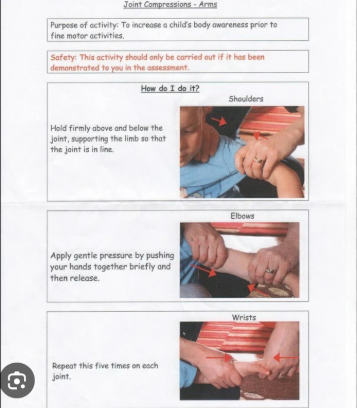
Why does it work?
Often sensory seekers move around to try and fulfil the need of proprioceptive input. This is a structured activity that fills the need, allowing the child to become more regulated and better focused.
When can/should they be used?
This should be used for proprioceptive sensory seekers, however, if that child is also tactile defensive, this can become more dysregulating for them. Make sure to know the client’s sensory needs you are working with before utilizing this technique. Sensory sensitive kids may not like this strategy as well since they tend to be more sensitive. When a child is open to a new sensory strategy and how they respond may vary on the day to day so it is good to trial a few times before giving up if they are observed to need that proprioceptive input.
Important to note:
If a child is ever visually uncomfortable or verbally makes uncomfortable sounds or asks to stop, this activity is to be stopped immediately. This activity should be fun/calming and should never be forced on a child.
In conclusion, joint compressions can be a useful tool to help a child receive that proprioceptive input and regulate. However, it is important to make sure the child is a good candidate for joint compressions and that they are never uncomfortable during the process. If used correctly this can be used in a specific sensory diet (discussed in an earlier post) or it can just be a strategy to use when the child is jumping all around seeking proprioceptive input.
References:
Malinakova, K., Novak, L., Trnka, R., & Tavel, P. (2021). Sensory Processing Sensitivity Questionnaire: A Psychometric Evaluation and Associations with Experiencing the COVID-19 Pandemic. International journal of environmental research and public health, 18(24), 12962. https://doi.org/10.3390/ijerph182412962
Morin, A. (n.d.). Sensory seeking and sensory avoiding: What you need to know. Understood. https://www.understood.org/en/articles/sensory-seeking-and-sensory-avoiding-what-you-need-to-know
Motiwala, R. (2021, May). Muscle tone. Muscle Tone – an overview | ScienceDirect Topics. https://www.sciencedirect.com/topics/medicine-and-dentistry/muscle-tone#:~:text=The%20muscle%20tone%20is%20evaluated%20most%20commonly,judging%20resistance%20to%20passive%20range%20of%20motion.
Samantha Berger, M. (2024b, November 27). Tactile defensiveness explained + tactile sensory activities: Napa Center. NAPA. https://napacenter.org/tactile-defensiveness/#:~:text=Tactile%20defensiveness%20is%20a%20specific,sensory%20input%20is%20not%20functional.


